How to make your own sourdough starter
The path to great bread begins with healthy starter.
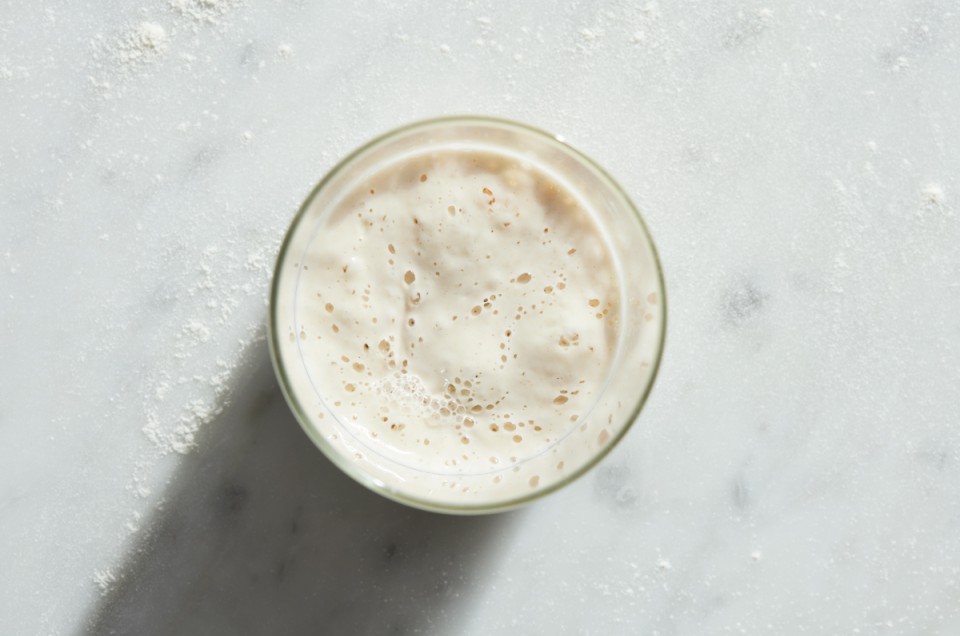

Have you ever wondered how to make your own sourdough starter?
Whether it conjures up a crusty, flavorful loaf of bread or a bubbling crock of flour/water starter, sourdough is a treasured part of many bakers’ kitchens. But where does the path to sourdough bread begin? And how do you start?
Start in your own home kitchen. And begin by learning how to make your own sourdough starter.
First, a word of advice. Sourdough baking is as much art as science. This method for making sourdough starter isn't an exact match for the one you read on another site, or in a cookbook, or in your great-grandma's diary. If you have a process you've successfully followed before, feel free to stick with it. Or try this one and compare.
The following timeline assumes you can find a relatively warm place (68°F to 70°F) to grow your starter. More on that below.
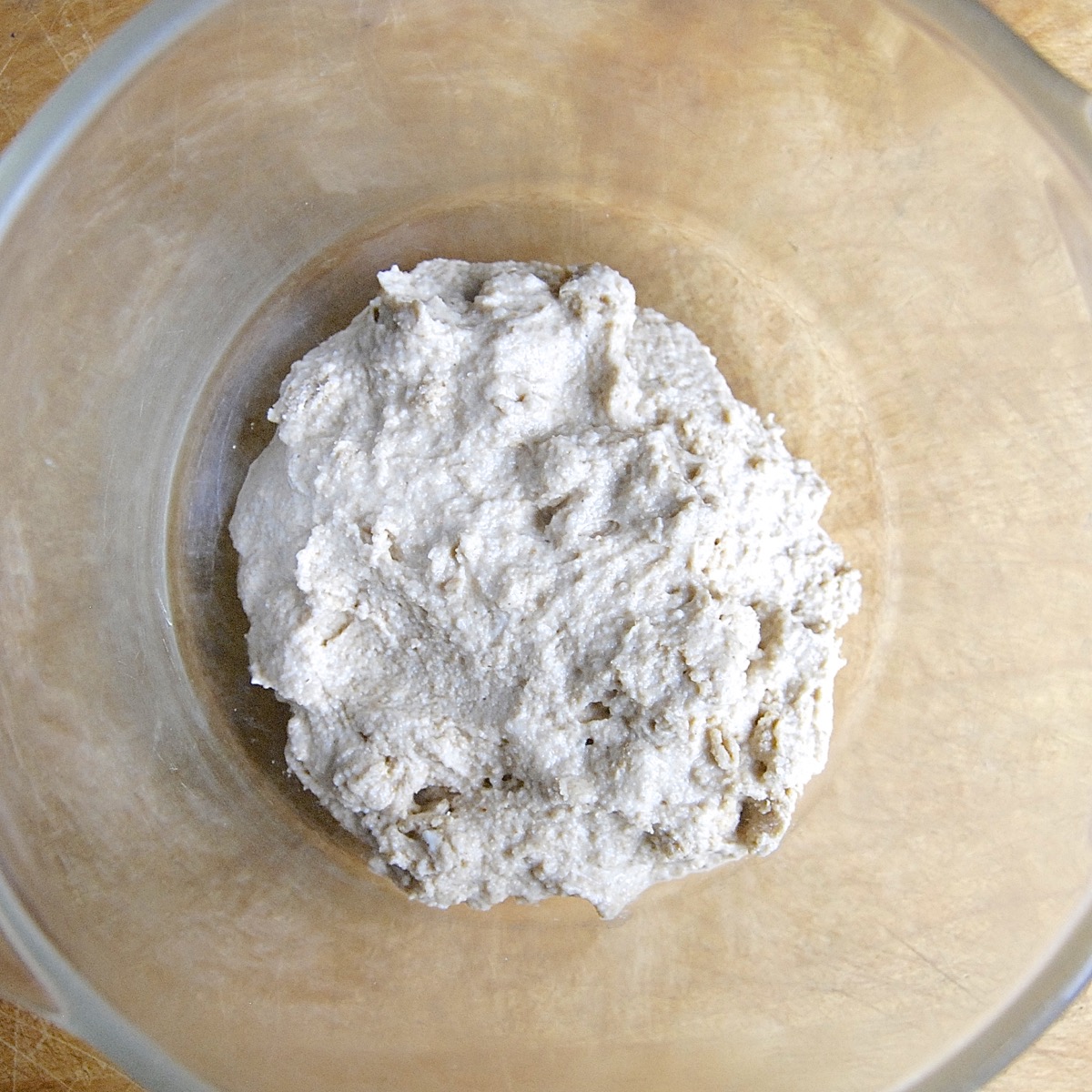
Combine 113g (1 cup) whole rye flour (pumpernickel) or whole wheat flour with 113g (1/2 cup) non-chlorinated cool water in a non-reactive container. Glass, crockery, stainless steel, or food-grade plastic all work fine for this.
Note that whole grain flour (whole wheat or rye) is used at the beginning of the process. This is because whole grains contain more nutrients and sourdough-friendly microorganisms than all-purpose flour. (Learn more in our post: Sluggish starter? Add a little whole grain flour.)
You also may have better results if you feed your starter with non-chlorinated cool water; from now on, we'll refer to this simply as "water."
Stir everything together thoroughly; make sure there's no dry flour anywhere. Cover the container loosely and let the mixture sit at warm room temperature (about 70°F) for 24 hours.
A note about room temperature: The colder the environment, the more slowly your starter will grow. If the normal temperature in your home is below 68°F, we suggest finding a smaller, warmer spot to develop your starter. For instance, try setting the starter near a baseboard heater, or atop your water heater, refrigerator, or another appliance that might generate ambient heat. Your oven, turned off but with the light on, is another option, as is setting the container of starter on a folded dish towel laid atop a heating pad on its lowest setting.
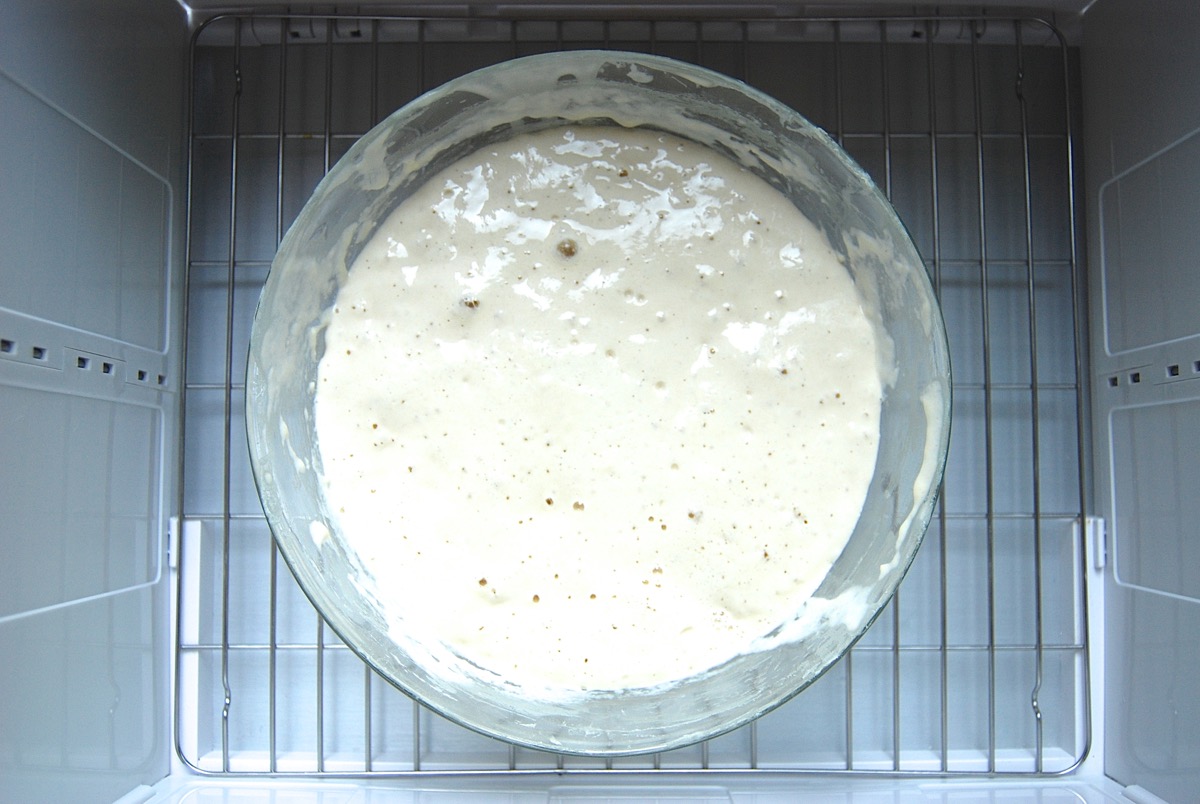
A temperature-controlled bread proofer or a sourdough home is the absolute ideal solution; if you bake lots of bread, consider investing in one of these tools.
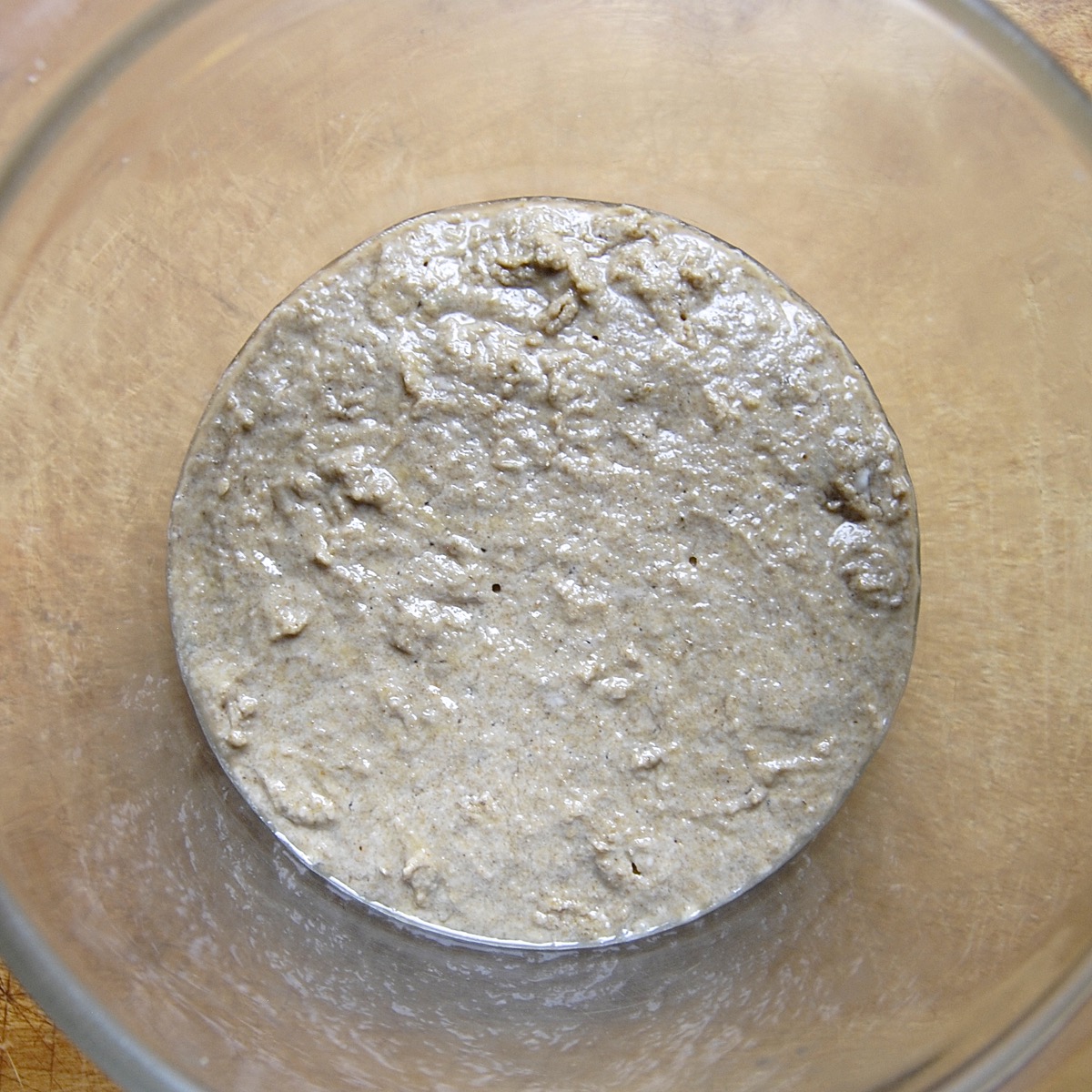
You may see no activity at all in the first 24 hours, or you may see a bit of growth or bubbling. Note that this starter looks fairly inert when viewed from up top.
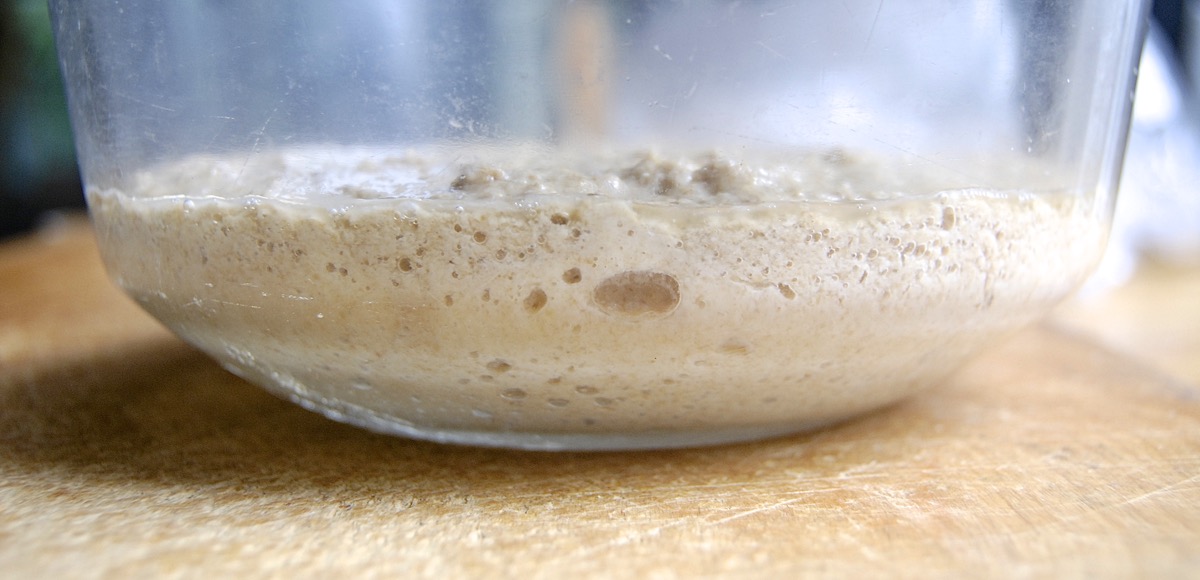
But when viewed from the side, you can see bubbles starting to form under the surface.
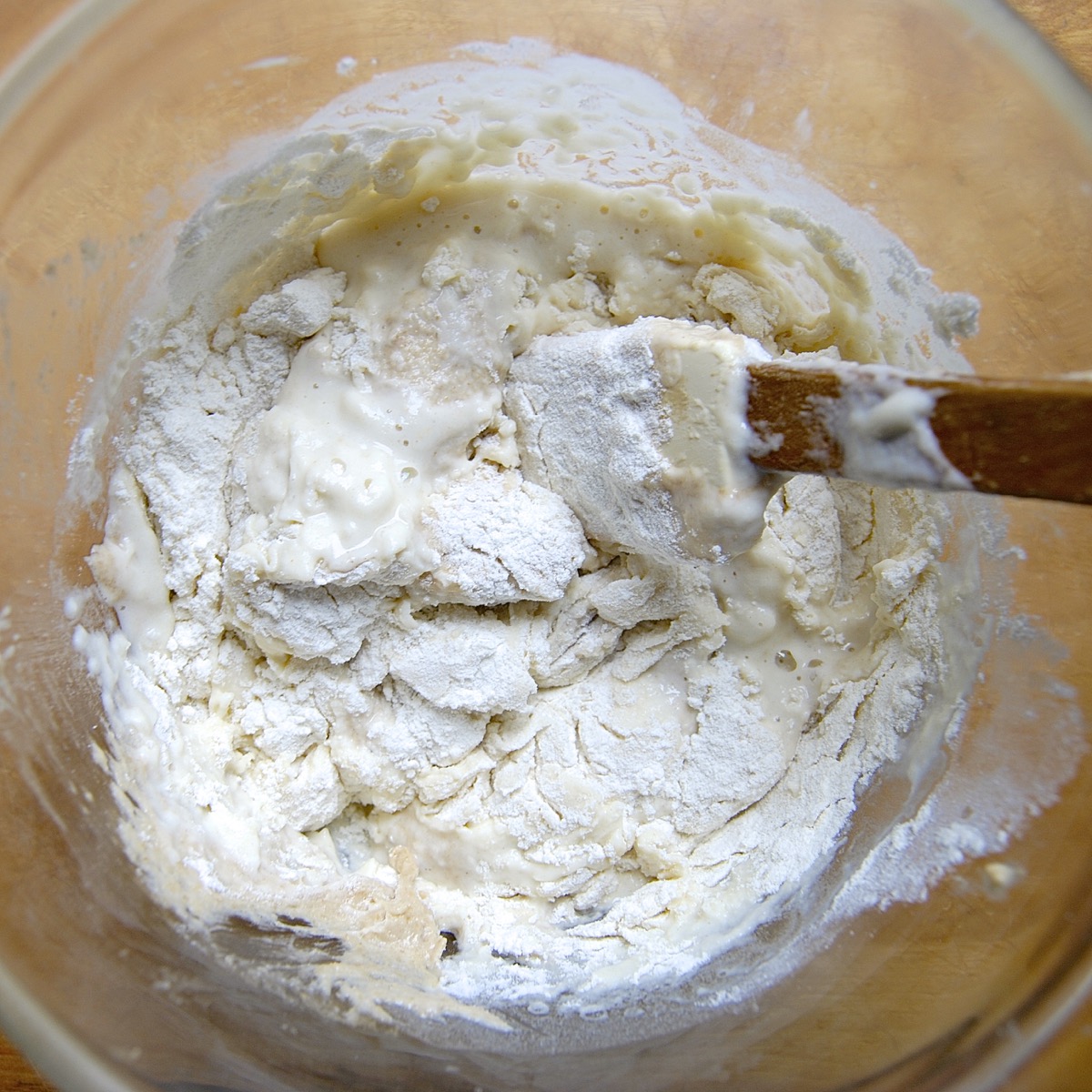
Either way, discard half the starter (113g; about 1/2 cup), and add to the remainder 113g (a scant 1 cup) King Arthur Unbleached All-Purpose Flour, and 113g (1/2 cup) cool water (if your house is warm); or lukewarm water (if it's cold).
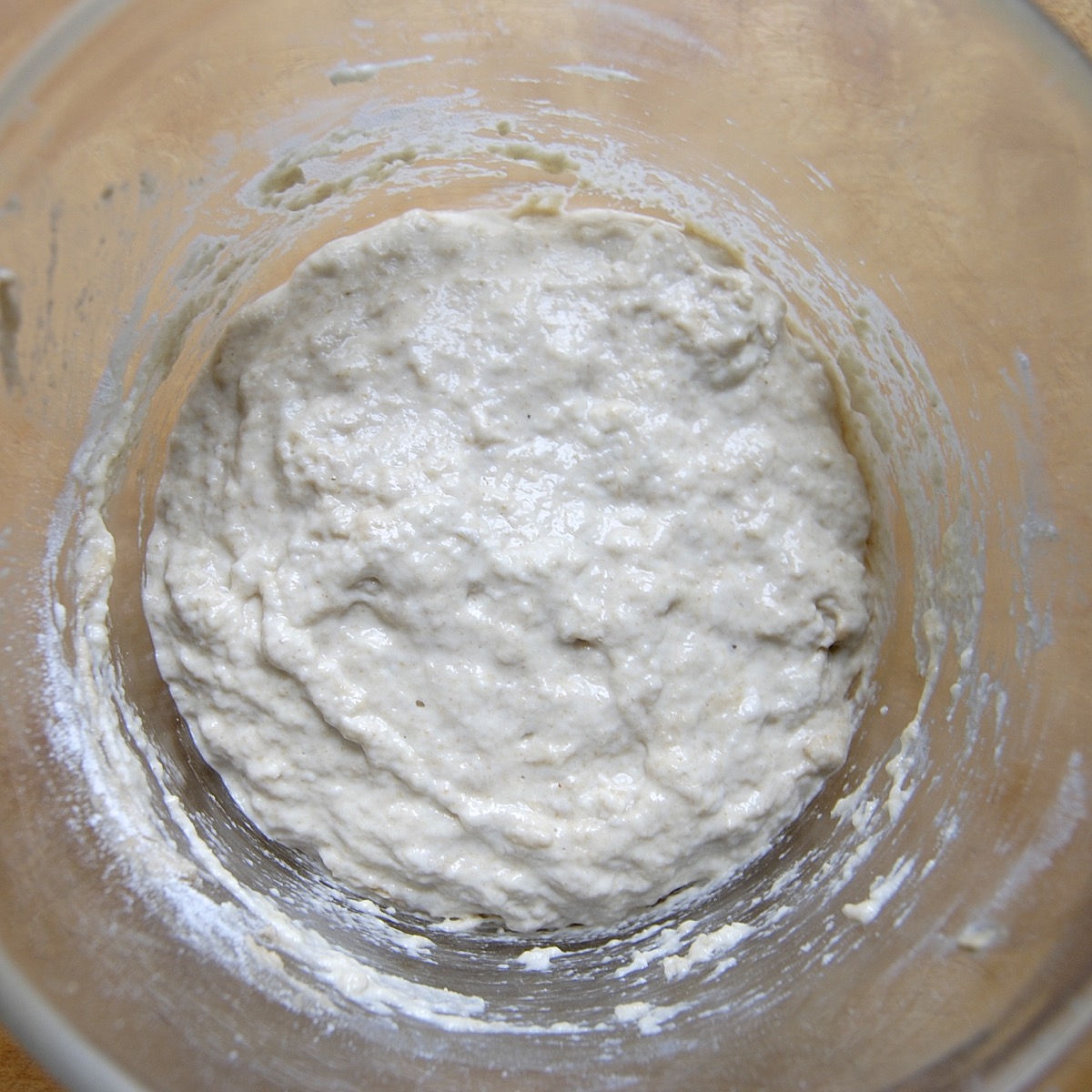
Mix well, cover, and let the mixture rest at room temperature for 24 hours.
It's necessary for three reasons. First, unless you discard, eventually you'll end up with way too much starter. Second, keeping the starter volume the same helps balance the pH. And third, keeping the volume down offers the yeast more food to eat each time you feed it; it's not fighting with quite so many other little yeast cells to get enough to eat.
Also, you don't have to discard it if you don't want to; you can give it to a friend, or use it to bake. There are quite a few recipes on our site using "discard" starter, including sourdough pizza crust, sourdough pretzels, and my all-time favorite waffles. And if you still aren't comfortable discarding so much, consider maintaining a smaller sourdough starter.
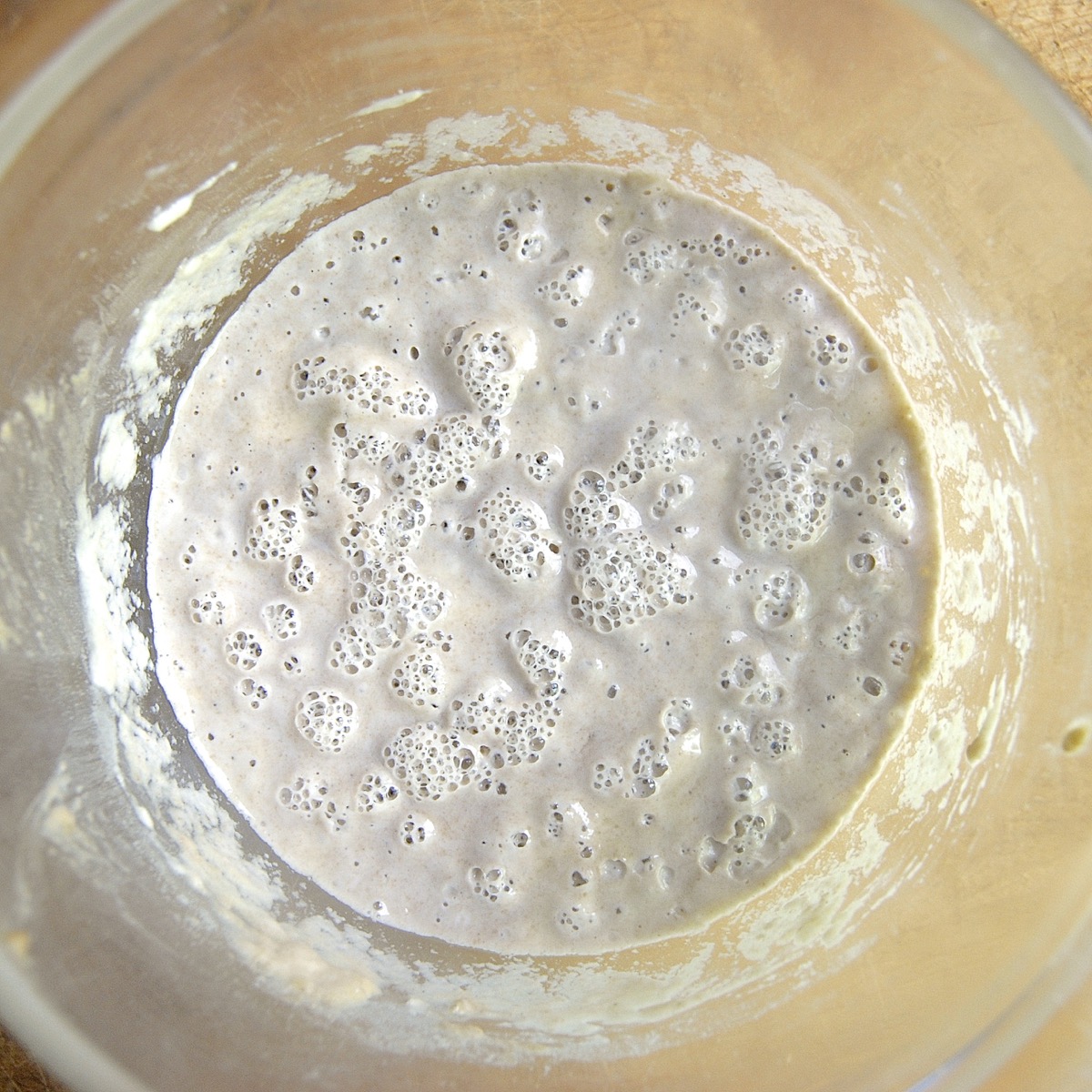
By the third day, you’ll likely see some activity — bubbling; a fresh, fruity aroma; and some evidence of expansion. The somewhat darker hue your starter got from its whole wheat beginnings will fade as you continue to feed it with all-purpose flour. It’s now time to begin two feedings daily, as evenly spaced as your schedule allows.
For each feeding, weigh out 113g starter; this will be a generous 1/2 cup, once it’s thoroughly stirred down. Discard any remaining starter.
Add 113g (a scant 1 cup) King Arthur Unbleached All-Purpose Flour and 113g (1/2 cup) water to the 113g starter.
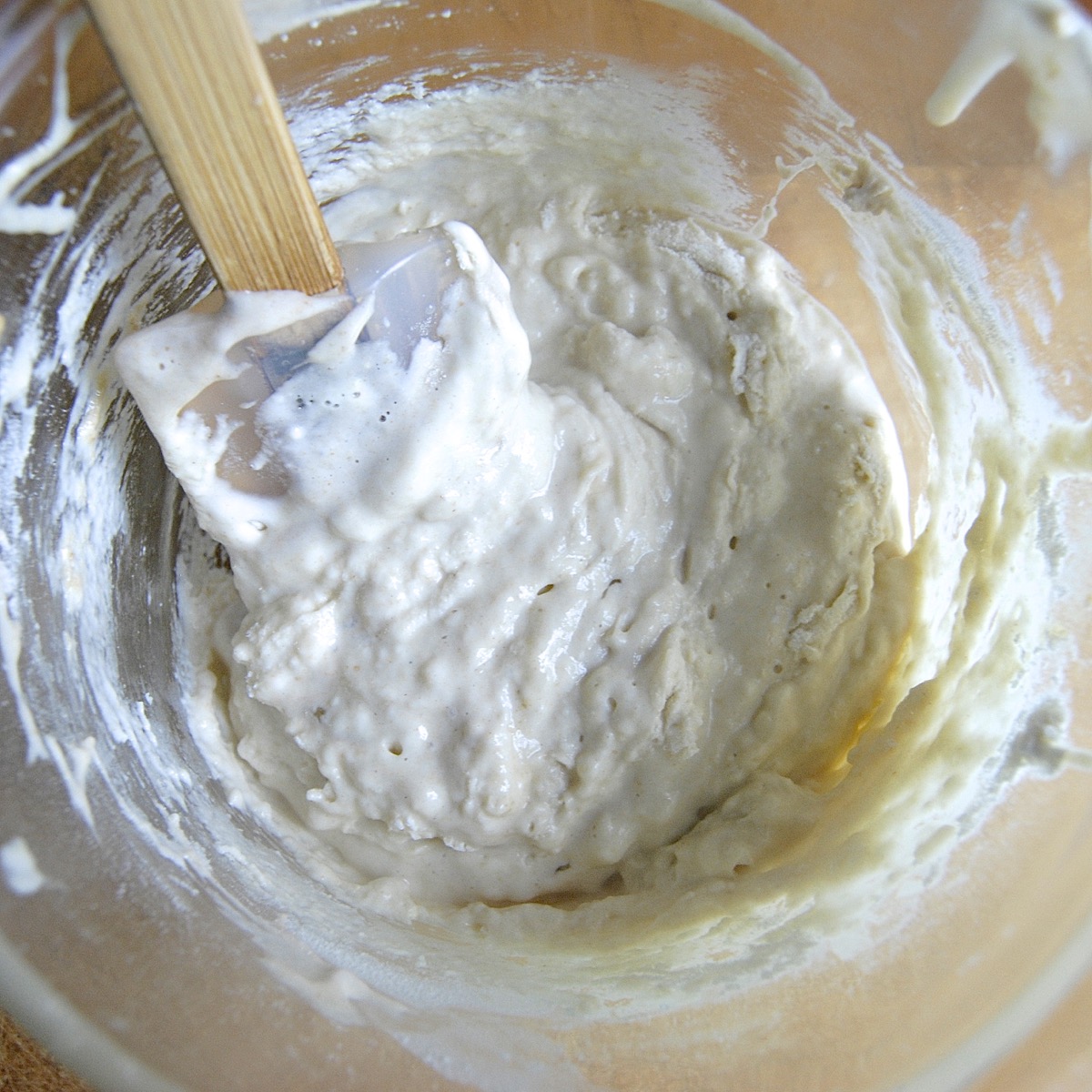
Mix the starter, flour, and water, cover, and let the mixture rest at room temperature for approximately 12 hours before repeating.
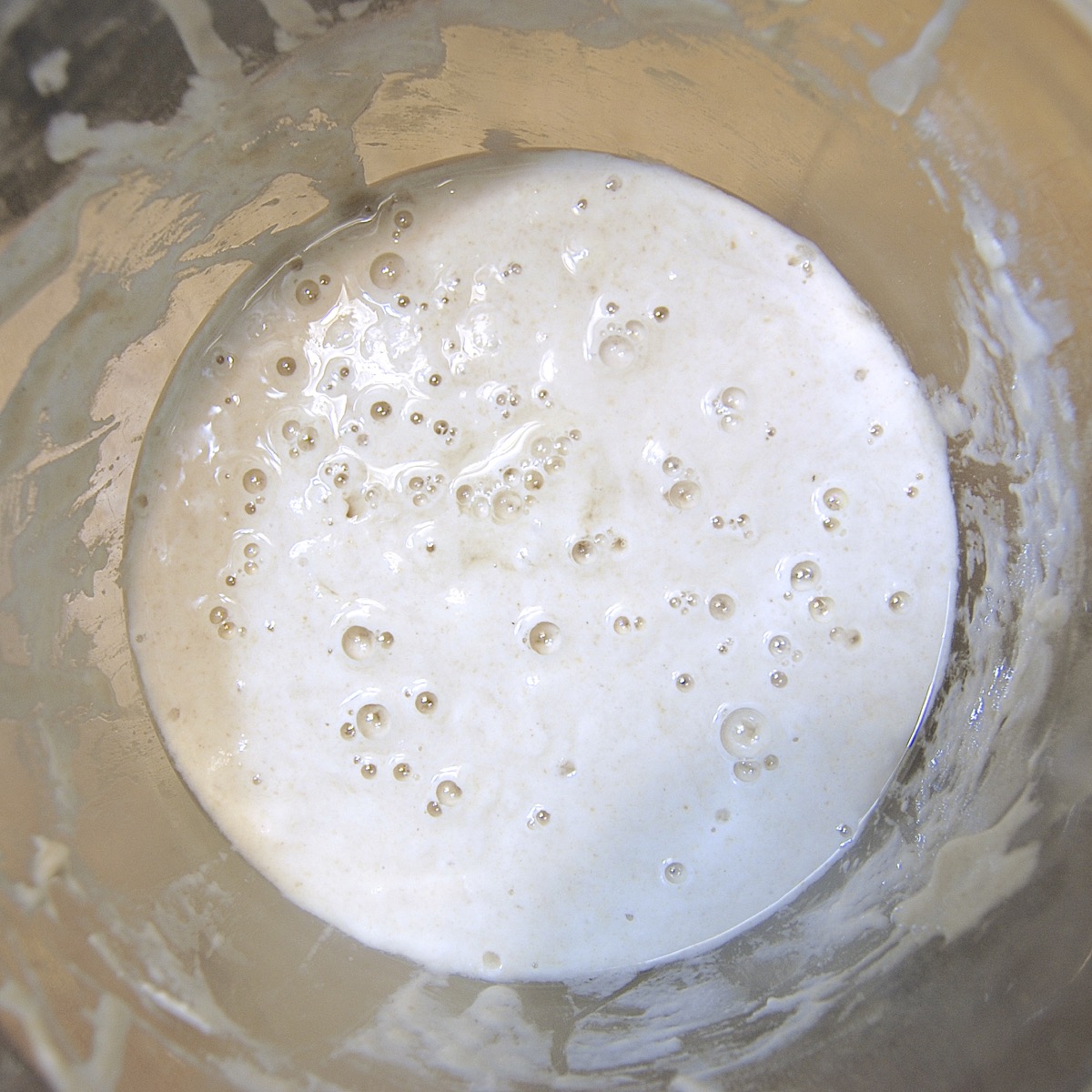
Here's the starter after its 12-hour rest. It may actually appear to be bubbling less than it did initially; this is normal.
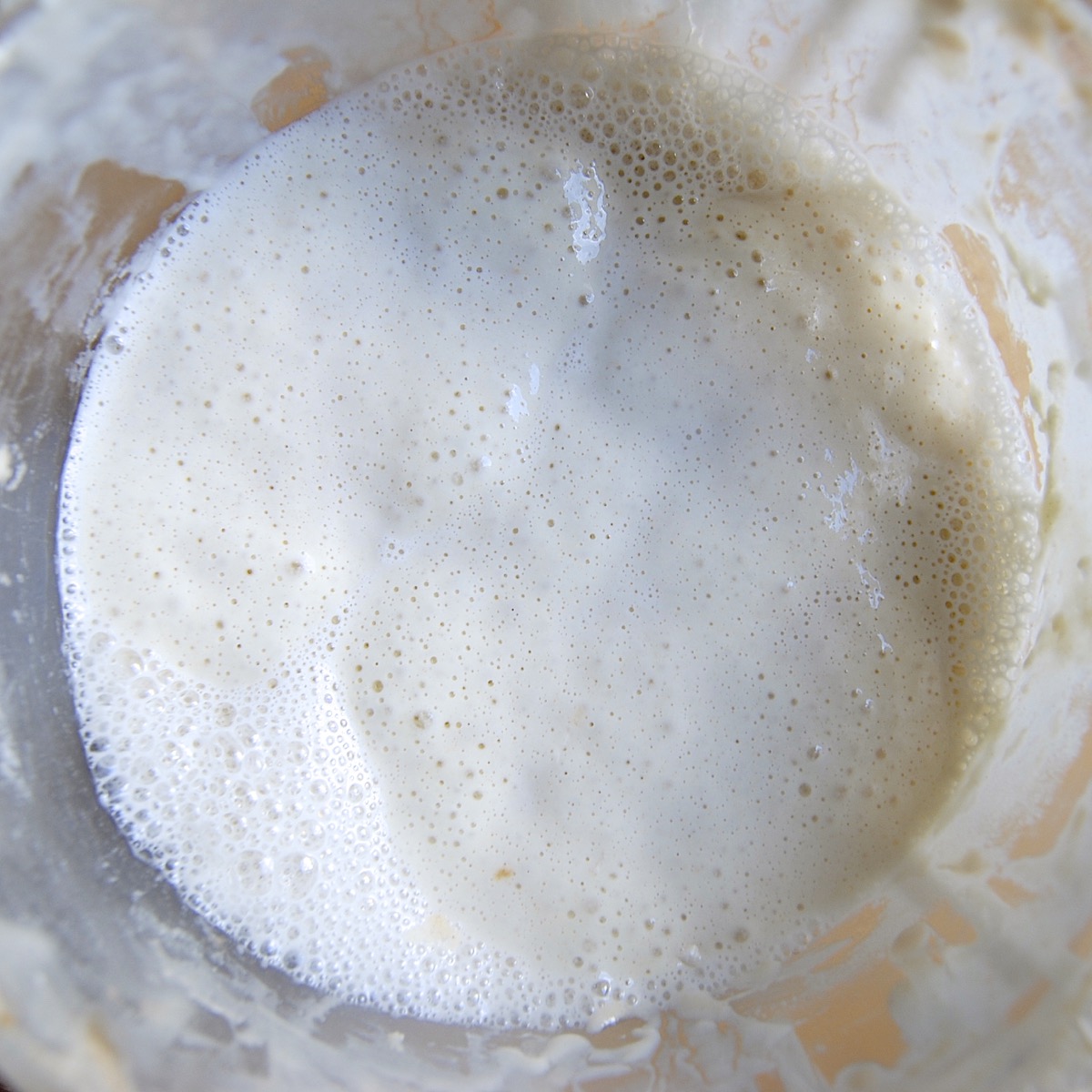
Repeat two-a-day feedings on days 4, 5, and as many days as it takes for your starter to become very active — almost foamy. If your starter is in cool surroundings, you may find it takes up to 2 weeks (or perhaps even longer) to get going.
When it shows a markedly different type of bubbling, though, it's just about ready to use.
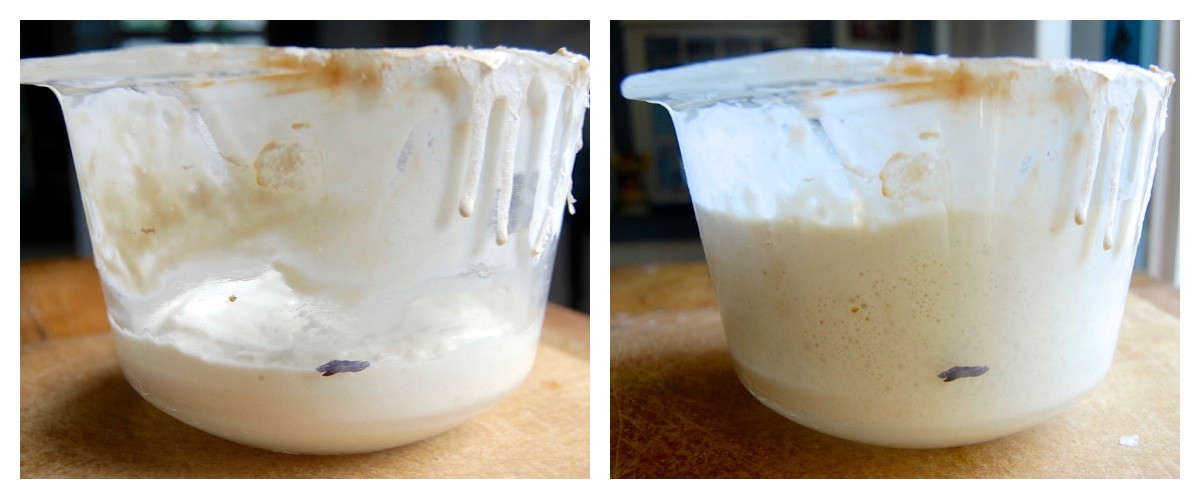
When you stir it down and feed it this time, make a note of how high it comes on the bowl or jar. You'll know it's ready to use in baking when it doubles in size in about 4 to 6 hours. You'll see lots of bubbles; there may be some little “rivulets” on the surface, full of finer bubbles.
Also, the starter should have a tangy aroma — pleasingly acidic, but not overpowering.
When it gets to this point — doubling in size in 4 to 6 hours — give it one last feeding. Discard all but 113g (a generous 1/2 cup). Feed as usual. Let the starter rest at room temperature for 4 to 8 hours; it should be active, with bubbles breaking the surface.
Remove however much starter you need for your recipe (no more than 227g, about 1 cup); and transfer the remaining 113g of starter to its permanent home: a crock, jar, or whatever you'd like to store it in long-term. Feed this 113g of starter with 113g of flour and 113g of water.
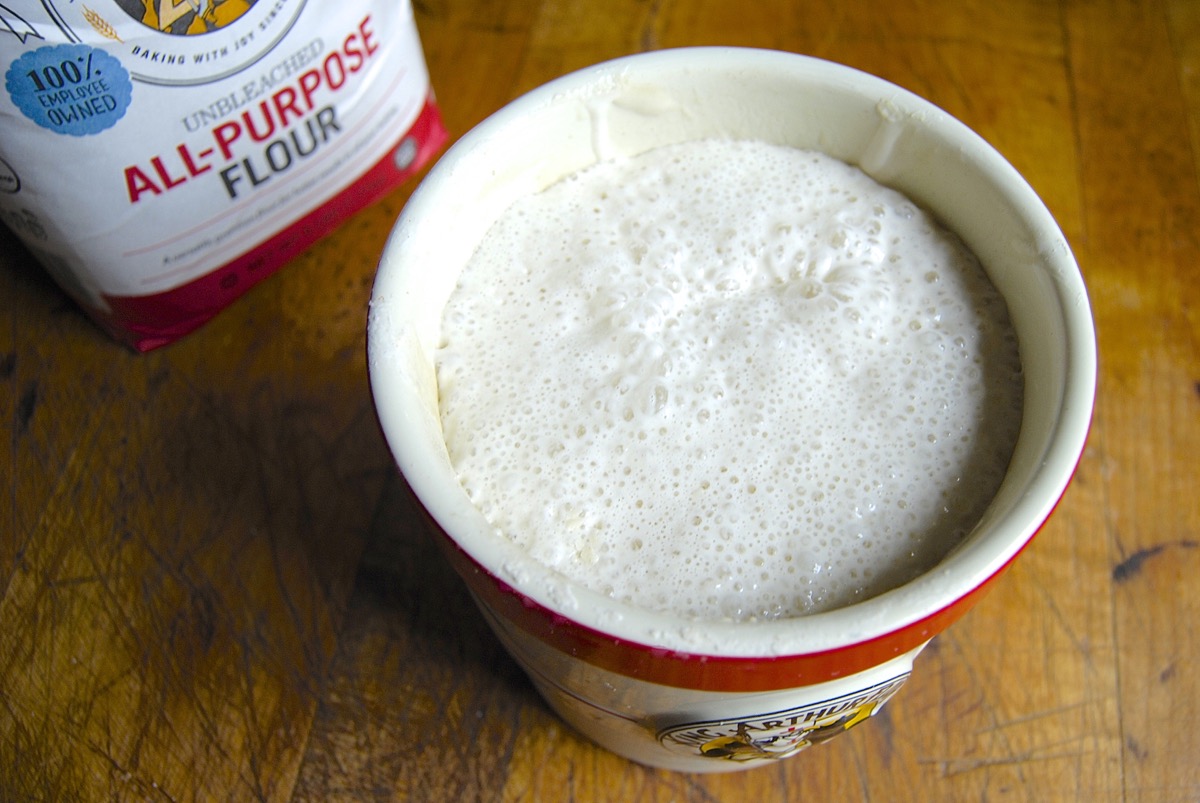
Let it bubble and become active for several hours before covering it and placing it in the refrigerator.
But wait — what if things haven't gone exactly according to schedule?
No worries. If, after a week, your starter isn’t ready, don’t lose heart; keep feeding it regularly, and it will gain strength — really! Be patient. The conditions in your kitchen may be more or less conducive to building a starter, depending on room temperature, the season, humidity, or how much you’ve been baking.
Remember, the keys to developing a successful starter are:
When your starter is strong enough, it’s time to go ahead and make your favorite sourdough bread.
Don't worry — everything will be just fine. Starter is remarkably resilient. If you missed one feeding, just pick back up with your typical routine and your starter will settle in easily. If you missed a few feedings, simply keep feeding at room temperature every 12 hours until it doubles in size within 4 to 8 hours. Learn more in our post: What if I forgot to feed my starter?
Sourdough starter should smell sharply sour but "clean," with no overtones of spoilage, or any oddly chemical smell (think acetone). While the aroma of sourdough may make you draw back simply from its strength, it shouldn't be distasteful.
When your starter is neglected for an extended period, the liquid on top tends to turn from clear to dark-colored. That's OK; simply stir the liquid back into the starter and feed it the meal it's desperately craving. However, if your starter shows visible signs of mold, or an orange or pink tint/streak, or smells putrid, throw it out; it's been invaded by harmful microorganisms, and it's time to start over.
Want something printable to follow? See our recipe for Sourdough Starter.
Next: Maintaining your starter
Cover photo by Mark Weinberg; food styling by Liz Neily.